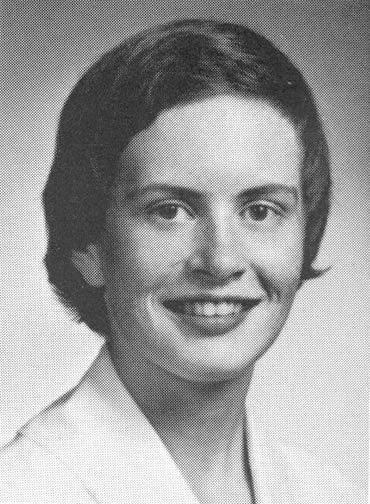JUDITH BROADAWAY
Today is October 1, 2008 and I just read a story that took place forty-seven years ago written by N. Joseph Potts about Judy, Joe, and a Corvair. Monza Over Miami By N. Joseph Potts (1997) 1961 Corvairs with four on the floor and bucket seats have a minor defect. When you shift into second gear, your hand touches the seat if the seat isn’t all the way back. When you shift into fourth, it touches the passenger’s seat… By the time I was 16, I had been on a few dates, but my first date with Judy was the first on which I was driving, and not my own ’51 Studebaker, either. I was driving Dad’s just-about-new Monza coupe, Honduras Maroon, with flippers on the wheel covers and dual exhausts (definitely not stock in that year). Why Dad bought this car, used, from a teenage male, no less, I don’t understand. What I do understand about it is that Dad was ever a lover of innovation, and to him, Corvair was the American Volkswagen. Things German, of course, he also loved, my mother always first among these. But he was American, and the Corvair embodied all the solid, American virtues of practicality, economy, reliability, and an exhaust note that never failed to snap heads around in time to catch the flash of those fake knock-off lugs spinning by. “Armando” was the name my mother, with her flair for the dramatic, gave our Monza. She had indeed been an actress in Europe, so the drama continued with “his” grandiloquent full name, Armando Monza de la Vizcaya y Potts. Vizcaya is a famous estate located about a mile from our house in Coconut Grove. The name Monza reminded us of Armando’s growl, particularly when gentled to its purring idle. We found out about the race track that lent the name only years later. In our senior year of high school, Judy was very nearly a woman, one an objective observer might have called handsome. Much of this came from her no-nonsense style, which extended to the Bass Weejuns she wore (of course without socks) and Madras shirts with her full, knee-length skirts. Of course, I thought (and still think) she was beautiful, with her auburn hair and peaches-and-cream complexion, but what made my knees buckle was how I felt when she put on those heavy black-framed glasses she used for reading. In 1961, my road to cool lay in a direction since dubbed “preppy.” Judy and I went to a very rich school, but I came, literally, from the wrong side of the tracks, and so had to improvise by wearing such getups as linen short-sleeved shirts, chinos, and tennis shoes (remember those simple items made from white canvas?). I hoped I looked like a member of the Kingston Trio—even if just the nerdy one. For her part, Judy was a good catch: daughter of a doctor who, like my own father, appreciated the virtues of rear-engined, air-cooled cars. Of course, his was a Porsche… Our date was to see West Side Story, just released and playing at one of the ritzy theaters on Miami Beach that had Super Panavision. When I pulled into Judy’s circular drive with Armando, my little air-blowing monster would have given pause to any other father, but not to him. He was as concerned for his daughter’s safety as any father, but he knew the sound of a good car when he heard it. We crossed Biscayne Bay by the Julia Tuttle Causeway, recently built and featuring what then was the highest and steepest bridge in South Florida. As we crested the bridge eastbound, the big, puffy clouds over the Atlantic beyond Miami Beach still glowed pink with the rays of the sun setting over the Everglades behind us. Judy liked the car, and she liked the movie. So did I, but I liked Judy more. After it was over and we headed back toward home, those hot heads of Armando’s air-cooled engine seemed cool compared to what I was feeling for Judy. After turning west, I shifted into fourth, and something was different. Where I expected to touch the passenger seat with my shift hand, I felt Judy’s fingers, and somehow, I hoped they weren’t there by accident. I didn’t move that hand until we got to the base of the high bridge over Biscayne Bay, when I had to shift down. I pulled my hand away with the shift lever, paused in neutral to declutch and blip the engine up for third (tachometers were for wimps), and pushed it into gear. If my heart had had a tach at that moment, it would have spun the pointer three times around. Through the windshield, the view changed from a city street to a highway leading straight up into the night sky. Replacing my hand, I found Judy’s where I had left it, but now open and waiting. As she returned the squeeze of my hand, I thought Armando would carry us right off the top of that bridge and on into the stars. Instead, the glittering skyline of Miami came up before our eyes and we drove down into a brand-new world. I went up the Julia Tuttle Bridge a boy, and came down its other side a man, with his woman. And his Corvair.
(published in January 1998 CORSA Communique)
 Judith Broadaway
Judith Broadaway